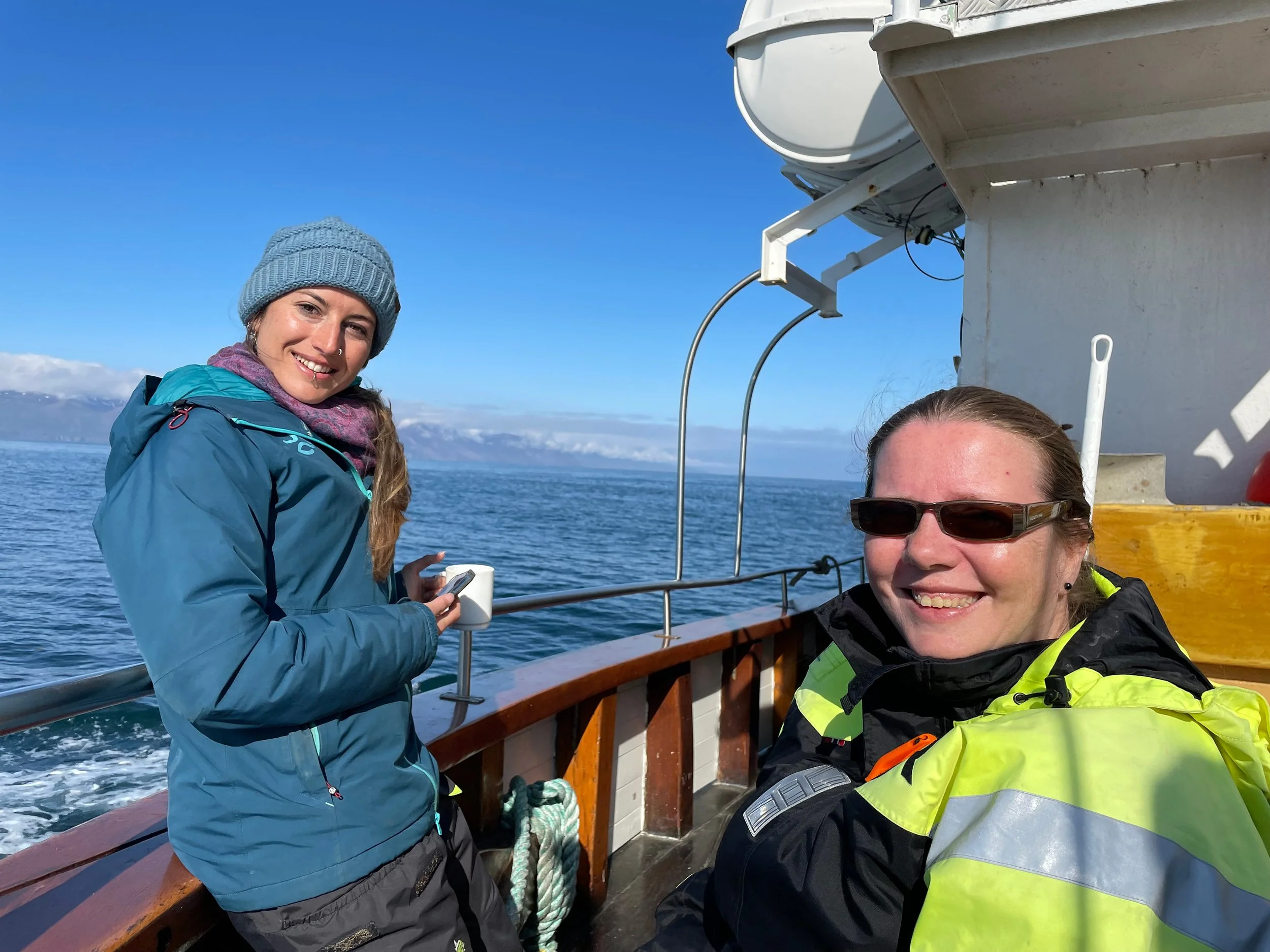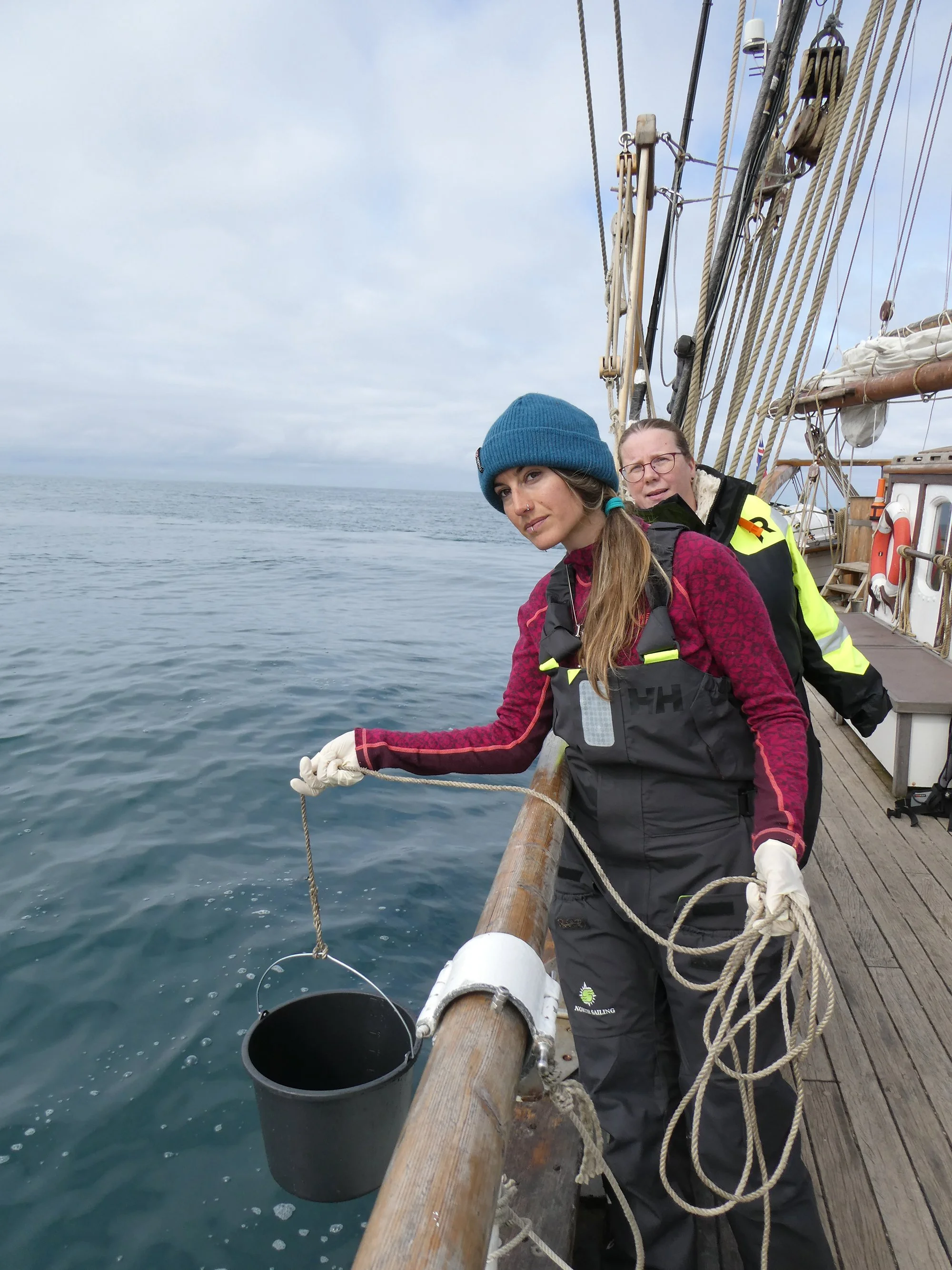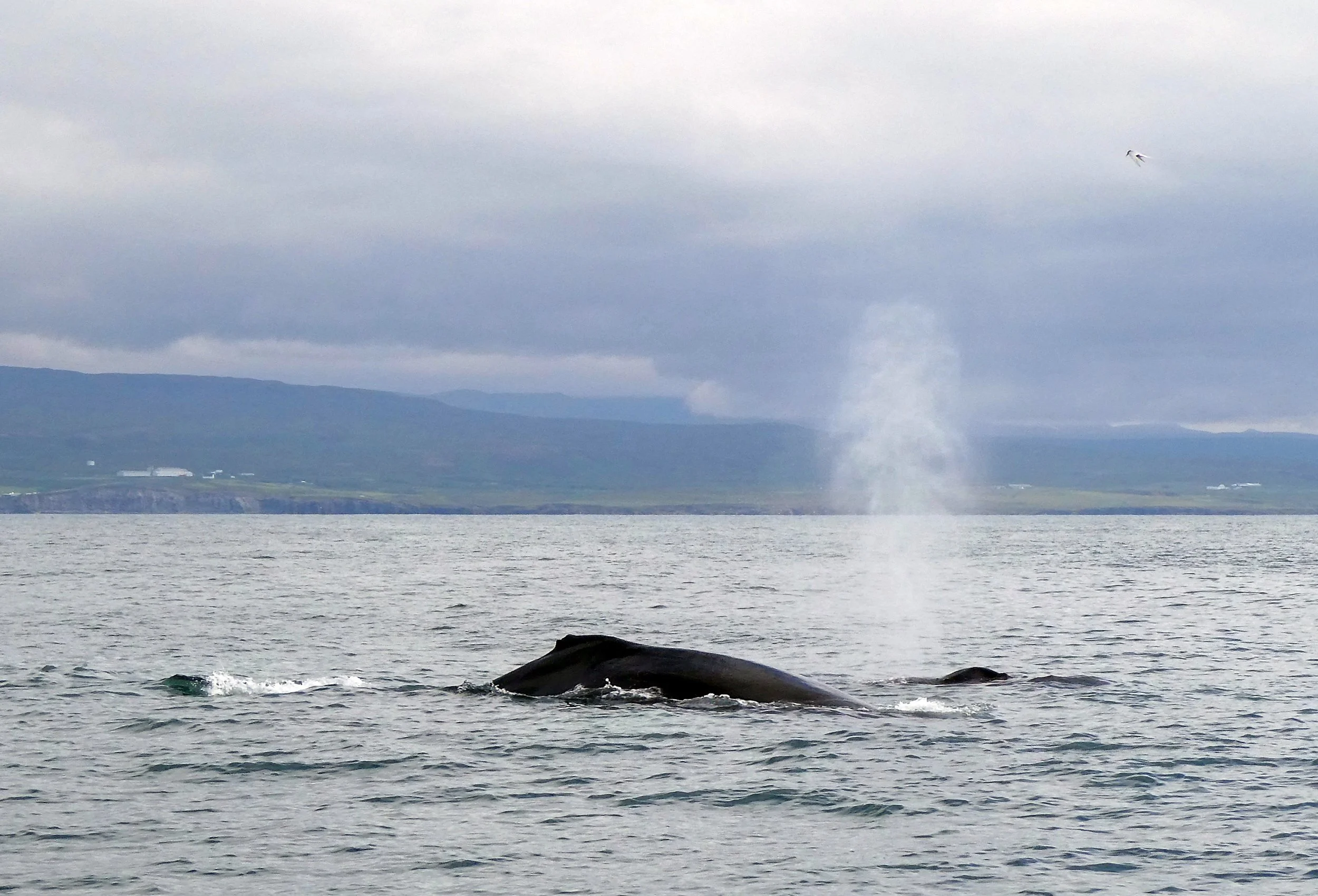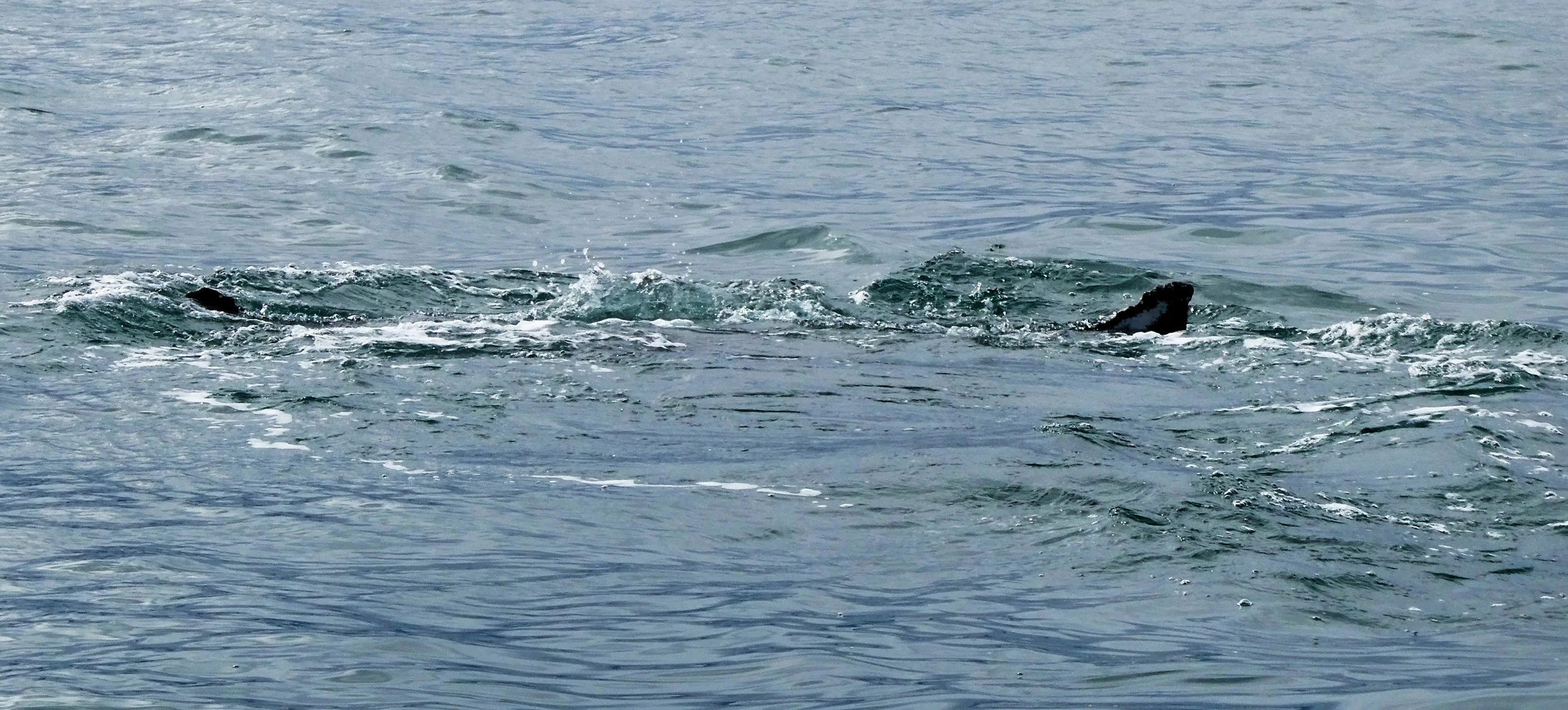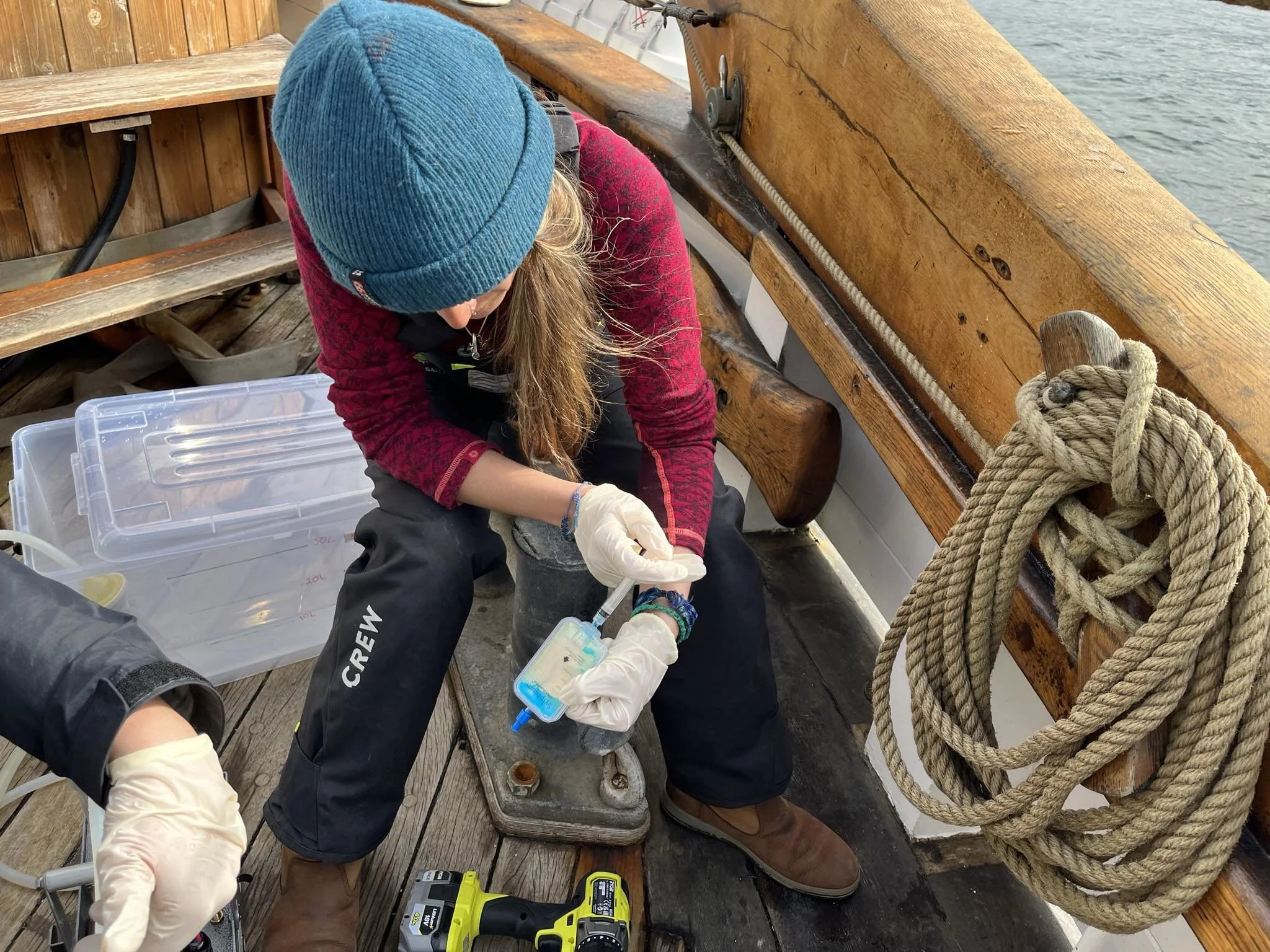The Underwater World in a Drop of Sea Water
By Safina Center Fellow Belén Garcia Ovide
©Belén Garcia Ovide
Just say yes!
Almost two years ago, the supervisor of my master‘s thesis, Marianne Rasmussen, who lives and works in Húsavík studying the whales at the University of Icelands‘ Research Center, came to me one day and asked if I wanted to be part of a grant proposal, representing Iceland with her in some environmental DNA project for BIODIVERSA. I didn't really get all the details but I just said yes. Doing science in my backyard in Húsavík as a PhD student sounded like a good plan, yet in my mind it was almost unreachable. I always dreamed about doing a phD about something I love. However, some years ago I decided that my life was already quite busy and fulfilled and that I would no longer worry too much if I put my energy somewhere else. It had to come naturally. And so, it happened!
Belén García Ovide and Marianne Rasmussen on their way to sample eDNA for the first time in Iceland. ©Marianne Rasmussen
The great proposal
In December 2022, we received the news! A total of 209 applications were submitted for the fund and eWHALE (our project) was among the 36 projects chosen for funding! I could not believe it.
It took me a while to process the new information. But soon I realized that everything was happening so fast that suddenly I was writing my PhD proposal to the Environmental Science department at the University of Iceland. My application was officially accepted in June this year! Now I just had to figure out how I was going to incorporate this new project into my already crazy marine biologist and sailor's life. So I agreed to go ahead with this with the condition that I could use this as a way to keep nurturing my current projects, especially Ocean Missions. So I made a master plan for the next 5 years and I somehow managed to puzzle everything together. The fun starts!
Belén García preparing for taking water samples from the whale flue print. ©Marianne Rasmussen
Environmental DNA used to monitor whales
eWHALE is a transnational research project which brings together partners from science, industry, and the public to establish a far-reaching, non-invasive cetacean and biodiversity monitoring system using sea water samples. This is a new and very exciting method in the study enabling researchers to better identify species, family groups, their diet, and possibly even single individuals. As organisms live and navigate in their aquatic habitat, they leave behind a trail of shed cells, skin, waste, and mucus. With an innovative technique like this, it means that with a single drop of seawater it is possible to identify all possible biodiversity (from the smallest to the biggest, including plants)! This is possible through the analysis of the environmental DNA (eDNA) contained in water samples using molecular biology. It seems that this can be an effective, cheap and affordable way to study life underwater and definitely a keystone for marine conservation.
Citizen science is an important part of this project. In Skjálfandi Bay, Iceland we have already started sampling water and trying out different filtration systems from North Sailing‘s regular whale watching tours and Ocean Mission‘s Whales Sails and Science tours, where we‘ve performed our microplastic research every summer since 2020. The idea is to use opportunistic platforms, like expedition boats and whale watching operators to collect the data while educating people onboard about what eDNA is and the relevance of the study.
Bettina Thalinger and Belén testing different pumps for water filtration onboard a whale watching tour ©Marianne Rasmussen
As part of my PhD program, I will be able to keep researching microplastic pollution in Icelandic waters, but I will also be part of an amazing team of experts that will dive into the first eDNA studies in sea water in Iceland. One of the chapters focuses on finding the best ways to incorporate eDNA sampling in citizen science tours. Regarding whale science, It is still not clear what applications can be expected from this research in Iceland, and this would depend on if we manage to isolate whale DNA from the samples we take this year. The samples will be sent to Innsbruck laboratory in Austria.
Certainly, I would be very happy to look into marine trophic webs in Skjálfandi Bay and detect exactly what fish and plankton species the whales are eating during the feeding season. Another dream would be to sample in Greenlandic waters (only two days sailing from Iceland) and look into presence or absence of rare and/or threatened arctic species (eg, narwhals, belugas, Greenland shark).
All these genetic clues can bring us closer to understanding how whales live and how a fast changing environment is affecting their lives, to raise awareness and find ways to protect them.
I am excited to embark on this new scientific journey and explore new ways to contribute to the protection of our beloved underwater world on which we all depend.
Follow the progress of this exciting new project in https://ewhale.eu/
Belén García and Bettina Thalinger preparing the filters for the sea water filtration ©Marianne Rasmussen
Humpback whales preparing for a dive in Skjálfandi Bay ©Marianne Rasmussen
Whale flukeprint ©Marianne Rasmussen
Preservation of the filter containing the eDNA sample using a blue buffer ©Marianne Rasmussen
First day of eDNA sampling in Skjálfandi Bay, Iceland, with Bettina Thalinger, eWHALE project coordinator (University of Innsbruck) and Marianne Rasmussen (University of Iceland´s Research Center) ©Marianne Rasmussen


